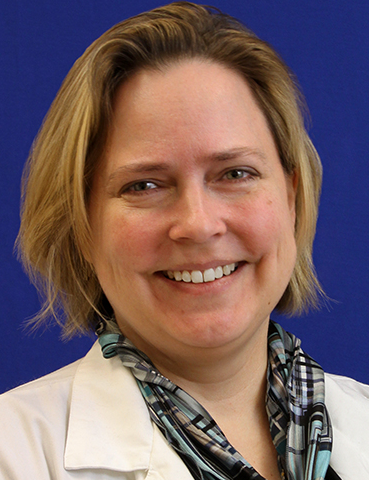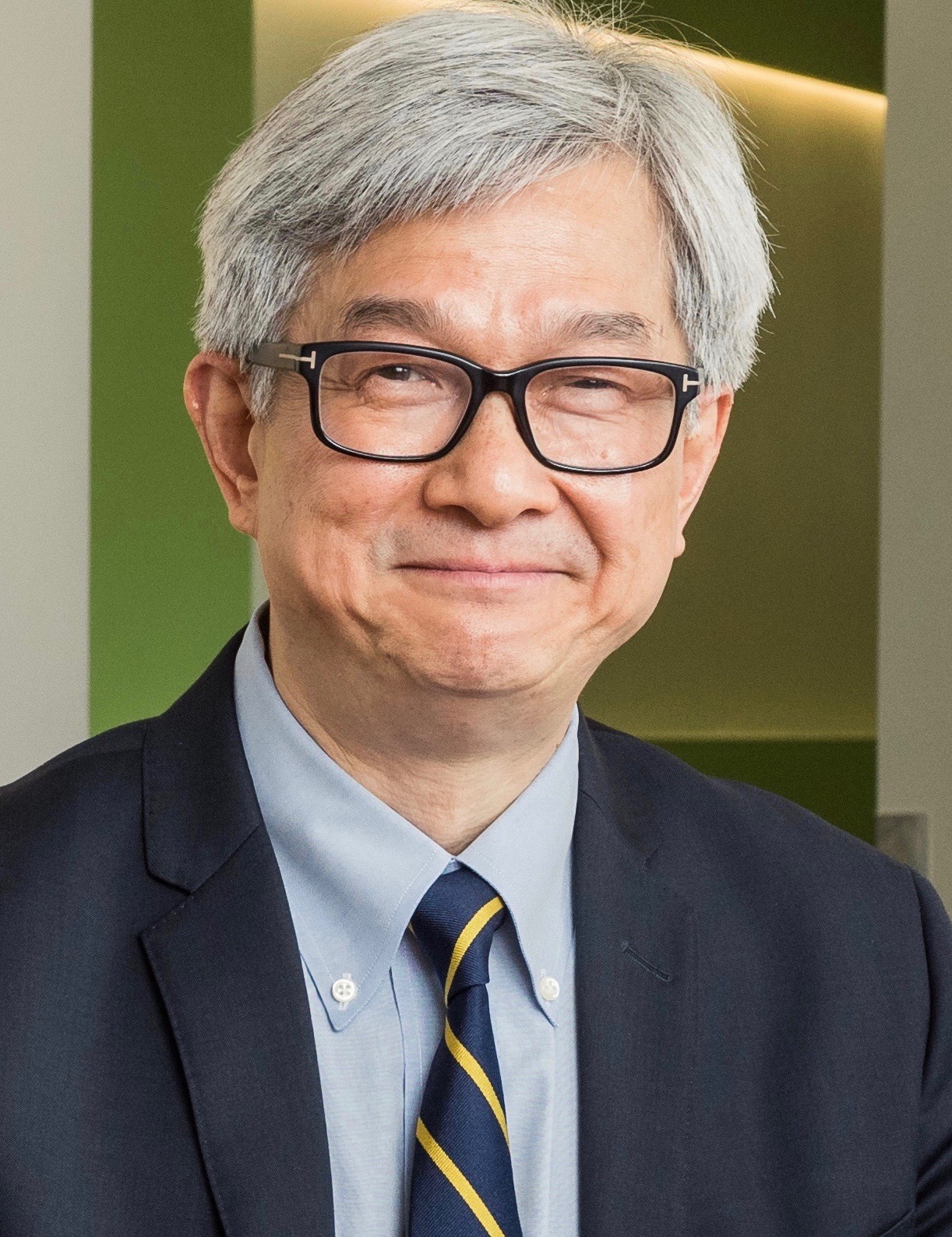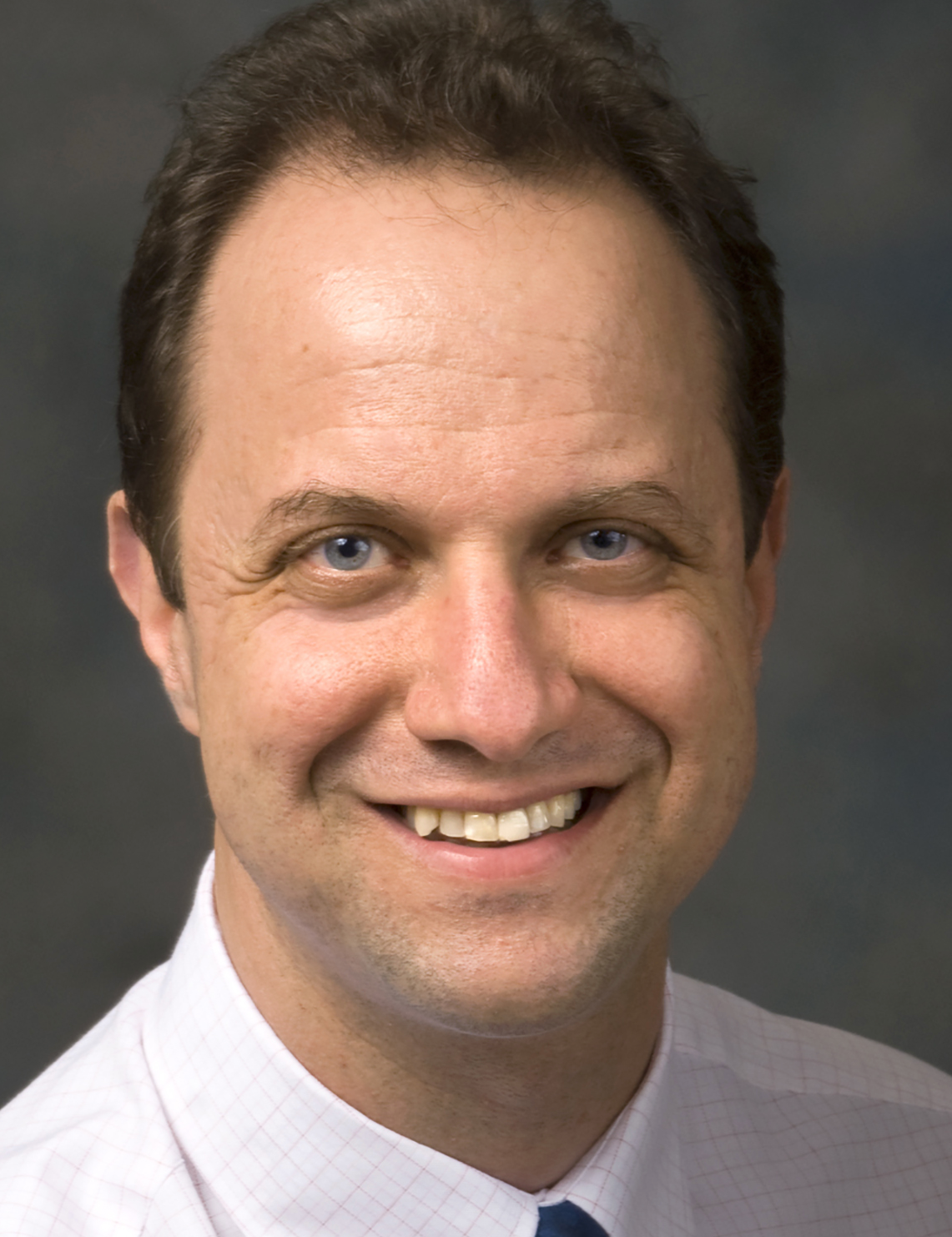Other Track AgendasCirculating Nucleic Acids and Circulating Rare Cells: Liquid Biopsy for Early Cancer Detection | Extracellular Vesicles (EVs: Exosomes and Microvesicles): Research, Diagnostics and Therapeutics Applications |

Wednesday, 28 March 201808:00 | Conference Registration, Materials Pick-Up, Morning Coffee and Breakfast Pastries | |
Session Title: Conference Opening Plenary Session |
| | 09:00 |  | Keynote Presentation Aspirations For and the Current Status of Blood-based Cancer Diagnostics
Walter Koch, Vice President, Roche Molecular Systems, United States of America
Dozens of published research studies have reported that quantitative
analysis of somatic mutations in blood is associated with dynamic
responses of tumors to therapy, development of drug resistance during
therapy and relapse after treatment, as well as genomic evolution of
primary tumors and metastases. To date, only one “liquid biopsy” test
has gained FDA approval; the cobas® EGFR Mutation Test v2 is used to
genotype NSCLC for dozens of EGFR activating and resistance mutations
used for selection of tyrosine kinase inhibitors Erlotinib or
Osimertinib. Beyond genotyping tumors for therapy selection or clinical
trial enrollment, there is an unmet medical need for better noninvasive
biomarkers to monitor solid tumor therapy response, recurrence, and
residual disease after surgical removal of early stage tumors. This
talk will explore the clinical development needed for liquid biopsy
tests to be broadly included in cancer diagnosis and treatment
guidelines, and to be used in routine clinical care with reimbursement. |
| 09:30 |  | Keynote Presentation Subgroups of Extracellular Vesicles from Tumor Tissues for Biomarker Discovery and Liquid Biopsy Development in Malignant Disease
Jan Lötvall, Professor Krefting Research Centre, University of Gothenburg, Chief Scientist, Codiak BioSciences; Founding President of ISEV, United States of America
Extracellular vesicles (EVs) have the capacity to shuttle both proteins, lipids and nucleotides such as RNA between cells, leading to an array of functional changes in a recipient cell. Importantly, the EV secretome changes significantly in disease, especially in cancer. We have recently developed a process to isolate EVs specifically from tumor tissues, and have utilized this technology to identify an array of biomarker candidates in malignant melanoma, breast cancer and colon cancer. Specifically, the technique identifies EV surface molecules from tumor tissue EVs, which are not present on plasma EVs from healthy individuals. Using this information, we have been able to develop assays to specifically identify cancer-EVs in the circulation in cancer patients compared to healthy individuals. This presentation will discuss EV diversity, and will give several examples of circulating cancer EV biomarkers that can function as liquid biopsies in cancer subgroup identification, cancer monitoring and putatively cancer screening. |
| 10:00 |  | Keynote Presentation Carboxypeptidase E: A Biomarker for Multiple Cancers in Circulating Exosomes
Y. Peng Loh, Chief and Senior Investigator, Section on Cellular Neurobiology, Eunice Kennedy Shriver National Institute of Child health and Human Development, National Institutes of Health (NIH), United States of America
|
| 10:30 | Coffee Break and Networking in the Exhibit Hall | 11:15 |  | Keynote Presentation Extracellular Vesicles and Neuro-Oncologic Cancer
Bob Carter, Professor and Chief of Neurosurgery, Massachusetts General Hospital, Harvard Medical School, United States of America
Will discuss EVs as biomarkers in neuro-oncologic cancer.
|
| 11:45 |  | Keynote Presentation Exosomal Integrins: Biomarkers for Liquid Biopsy
Lucia Languino, Professor of Cancer Biology, Thomas Jefferson University, United States of America
Cancer Extracellular Vesicles (EVs) found in blood are heterogeneous and show unique protein compositions. Our analysis shows that a prostate cancer EV subset, designated exosomes, carries a unique repertoire of integrins, which are surface receptors for extracellular matrix. Using iodixanol gradients, immunoblotting and size measurements we show that integrins are differentially expressed in cancer exosomes. Our recent studies demonstrate that exosomes from prostate cancer cells contribute to horizontal propagation of unique integrin-associated invasive phenotypes. We also show that exosomal integrins are transferred to cells in the tumor microenvironment and mediate response to therapy. This presentation will discuss the role of exosomal integrins in cancer progression and therapy response, and their potential use as clinical biomarkers for non-invasive diagnosis of cancer. |
| 12:15 |  | Keynote Presentation Extracellular Vesicles (EVs) and Cell Free DNA (cfDNA) as Blood-based Biomarkers: Plastic-based Microfluidics for their Enrichment and Analysis
Steve Soper, Foundation Distinguished Professor, Director, Center of BioModular Multi-Scale System for Precision Medicine, The University of Kansas, United States of America
While there are a plethora of different blood-based markers, EVs are generating significant interests due to their relatively high abundance (~1013 particles per mL of blood) and the information they carry. EVs contain a diverse array of nucleic acids, such as mRNA, lncRNA, and miRNA that can be used for disease management. In addition to EVs, cfDNA also are biomarkers that can be used to help manage different disease states using the mutations they possess that can have high diagnostic value. In spite of the relatively high abundance of cfDNA in diseased patients (~160 ng/mL), the extraction and enrichment of cfDNA has been inefficient, even by commercial kits, due to the low abundance of the tumor bearing DNA fragments (<0.01%) and the short nature of these fragments, especially cancer-related cfDNA (as small as 50 bp). In this presentation, we will discuss the design, fabrication and analytical figures-of-merit of a microfluidic device that can serve the dual purpose for the affinity-based selection of EVs and the solid phase extraction of cfDNA directly from plasma using the same device. The microfluidic is made from a plastic that can be injection molded to produce high quality devices at low cost. For EVs, the device is made cyclic olefin copolymer (COC) is UV/O3 activated to allow for the efficient immobilization of affinity agents to the surface of the device. In the case of cfDNA, the device is made from COC as well, but is only UV/O3 activated (i.e., no affinity agents used). Information will be provided as to the ability to molecularly profile the cargo contained within the affinity-selected EVs, in particular mRNA expression profiling. We will also discuss the use of this microfluidic to isolate with high recovery cfDNA from plasma samples with size selection capabilities. The isolated cfDNA could be queried for mutations using an allele-specific ligation detection reaction at a mutant to wild-type ratio <0.1%.
|
| 12:45 | Networking Lunch in the Exhibit Hall -- Meet the Exhibitors and View Posters | 13:28 | Session Title: Technology Developments in the Exosomes/EVs Space | 13:30 |  Developing Tools For Reliable Diagnostics and Research: Preservation of Bioanalyte Profiles and Standardized Pre-analytical Workflows Developing Tools For Reliable Diagnostics and Research: Preservation of Bioanalyte Profiles and Standardized Pre-analytical Workflows
Phoebe Loh, Senior Global Product Manager, QIAGEN
Changes in cellular biomolecule profiles after sample collection can make the outcome from diagnostics or research unreliable because the subsequent analytical test will not determine the situation in the patient but an artificial bioanalyte profile generated during the pre-analytical workflow. Sample preservation and robust pre-analytical methods are important considerations in developing workflows for translational research. QIAGEN provides a broad range of tools for sample preparation for biomarker isolation and discovery to assist in creating a standardized workflow for liquid biopsy applications.
| 14:00 |  Technology Spotlight: Technology Spotlight:
Enabling Biofluid Biomarker Discovery
Shannon Pendergrast, Chief Scientific Officer, Ymir Genomics, United States of America
Anna Markowska, Principal Investigator, Ymir Genomics, United States of America
| 14:30 |  High-Throughput Characterization of Single Exosomes Using an Automated Platform High-Throughput Characterization of Single Exosomes Using an Automated Platform
George Daaboul, Chief Scientific Officer, nanoView Biosciences, Inc.
Current analytical tools have detection limitations when used for exosome characterization due to the small-size of exosomes. Specifically, exosomes have fewer available surface epitopes and low-signal relative to background levels, especially in complex samples. NanoView Biosciences has developed a label-free visible-light microarray imaging technique that allows multiplexed enumeration and sizing of individual exosomes and microvesicles captured on the sensor in a one-step assay direct-from-sample and can work with samples volumes as small as 5 µl. The technique is high-throughput and automated and can be used for standardization of exosome preparations, biomarker discovery, and for exosome-based liquid biopsies.
| 15:00 |  Progress in Biomarker Detection with Fluorescence NTA Progress in Biomarker Detection with Fluorescence NTA
Clemens Helmbrecht, Director R&D, Particle Metrix GmbH
Nanoparticle Tracking Analysis (NTA) is a versatile technique for particle size, concentration and zeta potential determination. In combination with fluorescence detection capability NTA opens the door to specific biomarker detection. The benefits are minimum sample amount, absolute concentration determination in scatter and fluorescent mode and measurement in dispersion rather than immobilized state. Vesicle count and phenotyping will be presented on selected examples.
| 15:30 |  Applying Single Molecule Imaging Techniques to Discover More about Exosomes Applying Single Molecule Imaging Techniques to Discover More about Exosomes
Patrina Pellett, North American Sales and Applications Manager, Oxford Nanoimaging
Single molecule imaging techniques, such as super-resolution localization microscopy, single particle tracking and single molecule Forster energy transfer (smFRET), are powerful microscopy approaches that allow researchers to characterize the size distribution of vesicles, measure vesicles dynamics and detect molecular interactions. Attend this talk to learn how these techniques work, their advantages and disadvantages and how the Nanoimager from Oxford Nanoimaging can help you apply single molecule imaging techniques to your own research.
| 16:00 |  Integrated Methodology For Extracellular Vesicle Purification, Characterization and Linking Biophysical Properties to Biological Function Integrated Methodology For Extracellular Vesicle Purification, Characterization and Linking Biophysical Properties to Biological Function
Anoop Pal, Chief Scientist - Americas Region, iZON Science
Extracellular Vesicles (EVs) are heterogeneous in size, number, membrane composition and contents. A thorough understanding of this diversity and the linkage of biophysical properties to EV biological role and function is necessary. Real, validated, repeatable measurement data are required for the biomedical adoption of EV based diagnostics and therapeutic developments. These have not always been prominent in EV research. Izon Science has developed an integrated, standardizable and very practical methodology for EV purification and biophysical characterization amenable for diagnostic and therapeutic proposes.
| 16:30 |  Next Generation Sequencing Characterization of Small RNA “Signatures” of Different Bodily Fluids and the Practical Implications for Biomarker Discovery Studies Next Generation Sequencing Characterization of Small RNA “Signatures” of Different Bodily Fluids and the Practical Implications for Biomarker Discovery Studies
Bernard Lam, Senior Research Scientist, Norgen Biotek Corporation
In this presentation, we will discuss the impact of various steps in the
Next Generation Sequencing workflow on obtaining good small RNA
expression profile from a specific bodily fluid. Topics discussed will
include RNA extraction, enhancement of target signal by abundant
transcript removal and library preparation. The use of bodily fluids
such as whole blood, plasma, serum, urine or saliva for biomarker
discovery has attracted tremendous attention in recent years. However,
the characteristics of RNA (and DNA) present in bodily fluids are quite
different from traditional samples such as cells and tissues. Many of
the RNAs in bodily fluids are either free-circulating or are within
extra-cellular vesicles such as exosomes. More importantly, the RNAs
present in bodily fluids are usually of very low abundance and small in
size. This presents challenges for detection and discovery using many
next-generation gene expression technologies. Using deep sequencing, we
estimated the maximum number of each small RNA species in different
bodily fluids. A guideline to how much read depth is required for each
sample type will be discussed. We will present data on the “signatures”
or small RNA expression characteristics of different bodily fluids. We
will present examples, using these RNA expression “signatures” of a
bodily fluid, to show that removing an abundant RNA transcript can
significantly improve the small RNA diversity detected by sequencing.
Finally, we will discuss different RNA extraction technologies and their
ability to recover microRNA with low GC contents from bodily fluids
with low RNA content.
| |
Session Title: Afernoon Plenary Session -- Emerging Themes in Circulating Biomarkers |
| | 17:00 |  | Keynote Presentation New Tools for Liquid Biopsy: Rare Cells, Exosomes, and Circulating DNA
Daniel Chiu, A. Bruce Montgomery Professor of Chemistry, University of Washington, United States of America
This presentation will describe new technologies we developed for liquid biopsy and precision medicine. The three new tools include a rare-cell isolation instrument we call eDAR (ensemble decision aliquot ranking), a nanofluidic technology for the high-sensitivity and high-purity enrichment of exosomes, and a digital-nucleic-acid detection and analysis platform based on our SD (self-digitization) chip. I will outline the workings of these new tools, describe their performance, and discuss the clinical questions we are addressing with these next-generation technologies. |
| 17:30 |  | Keynote Presentation Utility and Challenges of ctDNA
J. Carl Barrett, Vice President, Translational Sciences Oncology, AstraZeneca, United States of America
ctDNA is rapidly becoming a major clinical tool for identifying patients
for therapy, monitoring response of therapy and exploring mechanisms of
resistance to therapies. Examples of all these applications will be
presented. It is imperative that ctDNA assay are sensitive and specific.
Data on the performance of different assays will be presented as well
the basis for lack of concordance in certain situations. |
| 18:00 |  | Keynote Presentation Mt-SEA Pipeline: High Throughput Flow Cytometric Analysis of Exosomes in Clinical Biofluids
Jennifer Jones, NIH Stadtman Investigator, Head of Transnational Nanobiology, Laboratory of Pathology, Center for Cancer Research, National Cancer Institute, United States of America
Because Extracellular Vesicles (EVs) carry surface receptors that are characteristic of their cells of origin, EVs have tremendous potential as non-invasive biomarkers for diagnosis, risk-stratification, treatment selection, and treatment monitoring. We developed a first-in-class pipeline to characterize EV heterogeneity and provide high-sensitivity quantification of informative EVs in biofluids before, during, and after treatment. By combining multiplex assays with high-resolution, single EV flow cytometric methods together into a Mutiplex-to-Single EV Analysis (Mt-SEA) pipeline, we are able to characterize a broad range of relevant EV subsets, while also accurately measuring the concentration of specific EV populations. Detection of tumor-associated EVs and detection of EV repertoire changes during treatment paves the way to future evaluation of EVs as as biomarkers for use in personalized, adaptive therapies. |
| 18:30 | Networking Reception with Beer, Wine and Appetizers in the Exhibit Hall. Engage with Colleagues and Visit the Exhibitors | 19:30 | Close of Day 1 of the Conference |
Thursday, 29 March 201807:00 | Morning Coffee, Breakfast Pastries and Networking in the Exhibit Hall | 07:30 | Breakfast Briefing: The Differential Downstream Expression Profile in Cancer Patients
Eugen Molodysky, Clinical Associate Professor, Sydney Medical School, University of Sydney, Australia
How useful to treatment is the information, when this information is limited to the genomic level? At the genomic level, are the gene mutations signature similar between primary and metastatic tumous? How useful is this in clinical decision making in cancer patients? Does the gene expression profile alter between primary and metastatic tumors, when exploring the downstream profile, at the epigenetic and biomarker levels. Epigenetic regulation refers to changes in the phenotypic expression of the genome, which alters gene expression without affecting the DNA sequence. Will determination of the differential expression downstream offer an enhanced personalized approach to support clinical decision making in cancer patients? | 08:00 | Nano-Plasmonic Exosome (nPLEX) Analysis
Hyungsoon Im, Associate Professor, Center for Systems Biology, Mass General Hospital (MGH)/Harvard Medical School, United States of America
This presentation will review a recent progress of nPLEX (nano-plasmonic exosome) technology. The sensor is based on transmission surface plasmon resonance (SPR) through periodic nanohole arrays. Target-specific exosome binding to the array causes SPR signal changes, which enables sensitive and fast detection of exosomes. We applied the first generation nPLEX system to detect exosomes collected from ovaian and pancreatic cancer patients. | |
Session Title: Evolution of Research in the Various Circulating Biomarker Classes -- Circulating Nucleic Acids and Circulating Vesicles |
| | 08:30 |  | Keynote Presentation EFIRM Liquid Biopsy (eLB)
David Wong, Felix and Mildred Yip Endowed Chair in Dentistry; Director for UCLA Center for Oral/Head & Neck Oncology Research, University of California-Los Angeles, United States of America
The advent of personalized medicine employing molecular targeted therapies has markedly changed the treatment of cancer in the past decade. Although tumor tissue biopsy-based genotyping is the current clinical practice for guiding clinical management, biopsy procedures can result in significant morbidity, limiting sampling to static snapshots which are further limited in scope by the inherent sampling bias of the analysis itself. To overcome these issues, technologies are needed for rapid, cost-effective, and noninvasive identification of biomarkers at various time points during the course of disease. Liquid biopsy is a rapidly emerging field to address this unmet clinical need as diagnostics based on cell-free circulating tumor DNA (ctDNA) can be a surrogate for the entire tumor genome. The use of ctDNA via liquid biopsy will facilitate analysis of tumor genomics that is urgently needed for molecular targeted therapy. Currently, most targeted approaches are based on PCR and/or next generation sequencing (NGS) for liquid biopsy applications with performance concordance in the 60-80% range with biopsy-based genotyping. We have developed a liquid biopsy technology “Electric Field Induced Release and Measurement (EFIRM)- Liquid Biopsy (eLB)” provides the most accurate targeted detection that can assist clinical treatment decisions for the most common subtype of lung cancer, non-small cell lung cancer (NSCLC), where tyrosine kinase inhibitors (TKI) that can extend the disease progress free survival period of these patients. eLB requires only 40 µl of sample volume, no sample processing, reaction time is 15min and can be performed at the point-of-care or high throughput reference lab using plasma or saliva. eLB detects actionable EGFR mutations in NSCLC patients with >95% concordance with biopsy-based genotyping. eLB is minimally (plasma)/ non-invasive (saliva) detecting the most common EGFR gene mutations that are treatable with TKI such as Gefitinib or Erlotinib to effectively extend the progression free survival of lung cancer patients. |
| 09:00 |  | Keynote Presentation Microfluidics for the Isolation of Biomarkers From Glioblastoma Patients
Shannon Stott, Assistant Professor, Massachusetts General Hospital & Harvard Medical School, United States of America
Glioblastoma is a highly fatal disease with few treatment options. Due to the location of the tumor, it is challenging to get dynamic, real-time information about the cancer. To address this need, we have developed microfluidic technologies to obtain information about these tumors by isolating rare cells (circulating tumor cells or “CTCs”) and tiny lipid particles, referred to as extracellular vesicles (EVs), from a simple blood draw. In this talk, data will be presented on our technological approach as well as our effort to interrogate their molecular content using next generation RNA sequencing and ddPCR. While the first application of this ‘liquid biopsy’ technology is in monitoring glioblastoma, it can be readily expanded to many different cancers and used to explore the underlying biology of metastasis. |
| 09:30 |  | Keynote Presentation Extracellular Vesicles as Mediators of Tissue Repair and Disease Reversal
Peter Quesenberry, Professor of Medicine, The Warren Alpert Medical School of Brown University, United States of America
Extracellular vesicle from marrow derived mesenchymal stem cells (MSCs) have been shown to have tissue repair characteristics. We have studied several models examining the capacity of MSC vesicles to promote tissue repair or disease reversal. In a murine model of monocrotaline induced pulmonary hypertension we have demonstrated that MSC derived vesicles will reverse or prevent the development of pulmonary hypertension as measured by vascular remodeling and right ventricular hypertrophy. In a similar vein we have demonstrated that MSC-derived vesicles mitigates radiation damage to murine bone marrow stem cells both in vitro and in vivo. This latter appears to be mediated by miRNA species. Lastly, MSC-derived vesicles have been shown to reverse the malignant phenotype of both colorectal and prostate cancer cells in vitro and in vivo.
The potential therapeutic applications of possible vesicle therapy are apparent and await appropriate progress in scale up approaches for harvest of vesicle types. |
| 10:00 | Challenges and Opportunities For Liquid Biopsies (ctDNA) in the Clinical Setting
Allison Welsh, Associate Director, Liquid Biopsy Development, Foundation Medicine, United States of America
| 10:30 | Coffee Break and Networking in the Exhibit Hall | 11:00 | Glioma Exosomes and Astrocytes: Conversion to the Dark Side
Michael Graner, Professor, Dept of Neurosurgery, University of Colorado Anschutz School of Medicine, United States of America
Glioblastomas (GBMs, WHO grade IV astrocytomas) are the worst of the central nervous system tumors; despite maximum (and damaging) therapeutic intervention, median survival time for patients is <15 months, and overall quality of life is poor. These abysmal outcomes have changed little in 20 years. Clearly, our current therapies are inadequate; we need innovative strides in understanding GBM biology to rectify this situation. One “hot” research area is that of the impact of tumor extracellular vesicles (EVs) on normal recipient cells. Tumor EVs have extraordinary abilities to manipulate tumor microenvironments and recipient cells both proximally and distally. Tumor EVs prepare the “metastatic niche” for circulating tumor cells prior to colonization of a target organ, deflect immune responses, and alter normal cells. Thus, tumor EVs impact recipient cells to support tumor growth and progression, which undoubtedly holds true for GBMs as well. However, little is known about effects of GBM EVs on normal astrocytes—do GBM EVs drive astrocyte phenotypic changes, potentially making the astrocytes into tumor promotors? The answers could re-shape our paradigms on gliomagenesis, particularly for recurrent tumors. Here we show that GBM EVs activate cancer-type signaling pathways in recipient astrocytes, promoting astrocyte migration towards the EVs, as well as astrocyte anchorage-independent growth in soft agar. Astrocytes release of various factors to generate a tumor-promoting milieu with increased tumor cell growth, particularly in the areas of inflammatory responses to entities that seem like viruses. We discuss the consequences of these phenomena in the context of our current therapies with a view towards therapeutic improvement. | 11:30 | Sequencing and Analysis of Patient Liquid Biopsies
Brian Dougherty, Executive Director, Translational Genomics, Oncology IMED, AstraZeneca R&D, United States of America
| 12:00 |  | Keynote Presentation About Noam Chomsky, DNA Motifs, Non-coding RNAs and Cancer Patients
George Calin, Professor and The Alan M. Gewirtz Leukemia & Lymphoma Society Scholar, University of Texas MD Anderson Cancer Center, United States of America
The newly discovered differential expression in numerous tissues, key
cellular processes and multiple diseases for several families of long
and short non-codingRNAs (ncRNAs, RNAs that do not codify for proteins
but for RNAs with regulatory functions), including the already famous
class of microRNAs (miRNAs) strongly suggest that the scientific and
medical communities have significantly underestimated the spectrum of
ncRNAs whose altered expression has significant consequences in
diseases. MicroRNA and other short or long non-codingRNAs alterations
are involved in the initiation, progression and metastases of human
cancer. The main molecular alterations are represented by variations in
gene expression, usually mild and with consequences for a vast number of
target protein coding genes. The causes of the widespread differential
expression of non-codingRNAs in malignant compared with normal cells can
be explained by the location of these genes in cancer-associated
genomic regions, by epigenetic mechanisms and by alterations in the
processing machinery. MicroRNA and other short or long non-codingRNAs
expression profiling of human tumors has identified signatures
associated with diagnosis, staging, progression, prognosis and response
to treatment. In addition, profiling has been exploited to identify
non-codingRNAs that may represent downstream targets of activated
oncogenic pathways or that are targeting protein coding genes involved
in cancer. Recent studies proved that miRNAs and non-coding
ultraconserved genes are main candidates for the elusive class of cancer
predisposing genes and that other types of non-codingRNAs participate
in the genetic puzzle giving rise to the malignant phenotype. Last, but
not least, the shown expression correlations of these new ncRNAs with
cancer metastatic potential and overall survival rates suggest that at
least some member of these novel classes of molecules could potentially
find use as biomarkers or novel therapeutics in cancers and other
diseases. |
| 12:30 | Networking Lunch in the Exhibit Hall | |
Session Title: Engineering of EVs and Therapeutic Delivery Opportunities |
| | 13:00 | Extracellular Vesicles: Potential for Treating Skin and Soft Tissue Injuries
John Ludlow, Executive Director, Regenerative Medicine, Zen-Bio, Inc., United States of America
Several recent studies support the hypothesis that EVs containing exosomes can mediate the pro-healing effects of stem cells in different wound healing models. This presentation will review our recent progress in studying skin wound healing and soft tissue repair following application of EVs containing exosomes. Our data supports the notion that these vesicles downregulate the expression of pro-inflammatory cytokines and stimulate collagen production in cultures of primary human keratinocytes. In vivo studies revealed a more rapid time to wound-closure following topical application. In a rat tendon injury model, significant healing activity was demonstrated by EVs containing exosomes compared to vehicle alone. This information will be then placed in the context of potential therapeutic applications. | 13:30 |  | Keynote Presentation Extracellular Vesicles (EVs) as Therapeutics for Extending Healthspan
Paul Robbins, Professor, Department of Biochemistry, Molecular Biology, and Biophysics, and the Institute on the Biology of Aging and Metabolism, University of Minnesota Medical School, United States of America
With aging, there is an inevitable and progressive loss of the ability of tissues to recover from stress, in part through loss of stem cell function. As a consequence, the incidence of chronic degenerative diseases increases exponentially starting at the age of 65. This includes neurodegeneration, cardiovascular disease, diabetes, osteoarthritis, cancers, and osteoporosis. More than 90% of people over 65 years of age have at least one chronic disease, while 75% have at least two. Thus, it is imperative to find a way to target therapeutically the process of aging to compress the period of functional decline in old age. Such a therapeutic approach would simultaneously prevent, delay or alleviate multiple diseases of old age. We are using both naturally aged mice and the ERCC1-deficient mouse model of accelerated aging mice as a model of accelerated aging to identify therapeutic strategies for extending healthy aging. Previously we demonstrated that intraperitoneal (IP) administration muscle-derived stem/progenitor cells (MDSPCs) isolated from young wild-type mice into ERCC1-deficient mice conferred significant lifespan and healthspan extension through a paracrine/endocrine mechanism. More recently, we demonstrated that BM-MSCs from young, but not old mice, also prolonged lifespan and healthspan in ERCC1-deficient mice, similar to MDSPCs. Taken together, these results suggest that at least two types of adult stem cell populations, BM-MSCs and MDSPCs, isolated from young mice extend lifespan and healthspan following IP injection in a mouse model of accelerated aging. We also have been characterizing and identifying the factors released by young, functional stem cells important for this extension of lifespan and healthspan. Conditioned media (CM) from young, but not old MDSPCs and BM-MSCs, rescued the function of aged, dysfunctional stem cells as well as senescent fibroblasts in culture. Moreover, this activity in the CM co-purifies with extracellular vesicles (EVs) released by young, but not old stem cells. Treatment of ERCC1-deficient mice with EVs from young stem cells is able to extend healthspan. Interestingly, EVs from the serum of young, but not old mice also can rescue cellular senescence suggesting that the effect of young serum on aging could be mediated in part by EVs. In addition, senescent cells appear to take up stem cell derived EVs more efficiently. Progress towards developing clinically relevant approaches using stem cell-derived extracellular vesicles to treat autoimmune and age-related pathologies will be presented. |
| 14:00 | Exosome Engineering For Delivery of Therapeutic Proteins: Principles and Applications
Chulhee Choi, Professor and Chair, BioMedical Imaging Center, Korea Advanced Institute of Science and Technology (KAIST), President, ILIAS Biologics Incorporated, Korea South
Our group has recently developed an opto-genetically engineered exosome system, named ‘exosomes for protein loading via optically reversible protein–protein interaction” (EXPLOR) that can deliver soluble proteins into the cytosol via controlled, reversible protein–protein interactions (PPI). By integrating a reversible PPI module controlled by blue light with the endogenous process of exosome biogenesis, cargo proteins of our interest can be loaded into newly generated exosomes. Protein-loaded EXPLORs were shown to significantly increase intracellular levels of cargo proteins and their function in recipient cells in both a time- and dose-dependent manner. In this presentation, I will introduce the basic principles of EXPLOR technology and follow-up studies for application. | 14:30 | .png) | Keynote Presentation Circulating Extracellular Vesicles are Biomarkers and Mediators of Alcoholic Liver Disease
Gyongyi Szabo, Professor & Vice Chair for Research, Department of Medicine, University of Massachusetts Medical School, United States of America
A salient feature of alcoholic liver disease (ALD) is Kupffer cell (KC) activation and recruitment of inflammatory monocytes and macrophages (MØs). We studied whether these key cellular events were mediated by extracellular vesicles (EVs) in the pathogenesis of ALD. EVs transfer biomaterials, including proteins and microRNAs, and have recently emerged as important effectors of intercellular communication. We also hypothesized that circulating EVs from mice with ALD have a characteristic protein cargo that may serve as biomarker of disease. The total number of circulating EVs was increased in mice with ALD compared to pair-fed controls. Mass spectrometric analysis of circulating EVs revealed a distinct signature of proteins involved in inflammatory responses, cellular development, and cellular movement between ALD EVs and control EVs. We also identified uniquely important proteins in ALD EVs that were not present in control EVs. When ALD EVs were injected intravenously into alcohol naive mice, we found evidence of uptake of ALD EVs in recipient livers in hepatocytes and MØs. Hepatocytes isolated from mice after transfer of ALD EVs, but not control EVs, showed increased monocyte chemoattractant protein 1 mRNA and protein expression, suggesting a biological effect of ALD EVs. Compared to control EV recipient mice, ALD EV recipient mice had increased numbers of F4/80hi cluster of differentiation 11b (CD11b) lo KCs and increased percentages of tumor necrosis factor alpha–positive/interleukin 12/23– positive (inflammatory/M1) KCs and infiltrating monocytes (F4/80intCD11bhi), while the percentage of CD2061CD1631 (anti-inflammatory/M2) KCs was decreased. In vitro, ALD EVs increased tumor necrosis factor alpha and interleukin-1b production in MØs and reduced CD163 and CD206 expression. We identified heat shock protein 90 in ALD EVs as the mediator of ALD-EV- induced MØ activation. In conclusion these results indicate a specific protein signature of ALD EVs and demonstrate a functional role of circulating EVs in mediating KC/MØ activation in the liver. |
| 15:00 |  | Keynote Presentation Acoustic Tweezers: Separating Exosomes, Circulating Tumor Cells, and Other Tiny Objects Using Sound Waves
Tony Jun Huang, William Bevan Distinguished Professor of Mechanical Engineering and Materials Science, Duke University, United States of America
The ability to isolate exosomes, circulating tumor cells (CTCs), and other circulating factors from biological fluids in a precise, biocompatible, and convenient manner is critical for many biomedical studies and applications. Here we summarize our recent progress on an “acoustic tweezers” technology that utilizes sound waves to manipulate exosomes, CTCs, and other tiny particles. For example, we developed an acoustic separation method to isolate exosomes directly from undiluted whole blood in a label-free and contact-free manner. This device consists of two modules. Micro-scale blood components are first removed by the cell-removal module, followed by extracellular vesicle subgroup separation in the exosome-isolation module. In the cell-removal module, we demonstrate the isolation of 110 nm particles from a mixture of micro- and nano-sized particles with a yield greater than 99%. In the exosome-isolation module, we isolate exosomes from an extracellular vesicle mixture with a purity of 98.4%. Integrating the two acoustofluidic modules onto a single chip, we isolated exosomes from whole blood with a blood cell removal rate of over 99.999%. The acoustic tweezers technology is capable of delivering high-precision, high-throughput, high-efficiency cell/particle/fluid manipulation in a simple, inexpensive, cell-phone-sized device. More importantly, the acoustic power intensity and frequency used in the acoustic tweezers technology are in a similar range as those used in ultrasonic imaging, which has proven to be extremely safe for health monitoring, even during various stages of pregnancy. As a result, the acoustic tweezers technology is extremely biocompatible; i.e., cells can maintain their natural states and highest integrity during the acoustic cell-manipulation process. |
| 15:30 | Exosomal Biomarkers in Clinical Diagnostics – How to Identify Valid and Better Biomarker Signatures from Micro-vesicular Small RNA Sequencing
Michael Pfaffl, Professor, Technical University of Munich, Germany
Extracellular vesicles (EVs) are circulating in body liquids and are involve in the intercellular communication with key functions in physiological or pathological processes. In recent time especially the exosomes have gained huge interest because of their molecular diagnostic potential based on the containing microRNAs. The past decade has brought about the development and commercialization of a multitude of extraction methods to isolate EVs and exosomes, primarily from blood compartments. The exosome purity and which subpopulations of EVs are captured strongly depend on the applied isolation method, which in turn determines how suitable resulting samples are for potential downstream applications and biomarker discovery. Herein we compared the performance of various optimized isolation principles for serum EVs/exosomes in healthy individuals and critically ill patients. The isolation methods were benchmarked regarding their suitability for biomarker discovery as well as biological characteristics of captured vesicles. Isolated vesicles were deeply characterized by NTA (amount, size, distribution), surface marker proteins (Western Blot), and containing small-RNA families (small-RNA NGS). To analyze the sequencing results, a self-established bioinformatics pipeline for microRNA (based on R) and a deeper analysis of their isoforms (isomiRs) was applied. Goal was the development of microRNA/isomiR biomarker signature for the early diagnosis and for a valid classification of critical ill patients, with focus on sepsis. The results provides guidance for navigating the multitude of EV/exosome isolation methods available, and helps researchers and clinicians in the field of molecular diagnostics to make the right choice about the EV/exosome isolation strategy. | 16:00 | On-Chip Liquid Biopsy: Progress in Isolation of Exosomes and Their RNA Sequencing For Prognosis of Prostate Cancer
Navneet Dogra, Researcher, IBM, United States of America
Exosomes are an exciting target for “liquid biopsies”. However, isolation of exosomes and reproducible detection of their biomarkers remains an ongoing challenge. We have developed a microfluidic nanoscale DLD (Deterministic lateral displacement) device that brings capabilities with size based sorting of colloidal particles at the tens of nanometers scale (Wunsch et al. , Nature Nanotechnology 2016). I will present our most recent findings using RNA sequencing of cancer cell lines and patient samples. | 16:30 | Immune Modulation by Mesenchymal Stem Cells through Extracellular Vesicles
Andrew Hoffman, Professor, Director -- Regenerative Medicine Laboratory, Tufts University, United States of America
Mesenchymal stem cells (MSC) are currently being evaluated in human clinical trials for their potential to mitigate injuries due to inflammatory, ischemic or hyperoxic, pro-fibrotic, septic, degenerative, and neoplastic insults. The MSC are employed as either native, pre-conditioned, or genetically manipulated cells, or they are exogenously supplemented biologic or pharmacologic agents (e.g. chemotherapeutics). The mechanisms employed by MSC in vivo have come into question, with the realization that MSC are short-lived in vivo, and factors such as extracellular vesicles (EV) exert interactions with resident immune effector. Better understanding of immune mechanisms of native EV will lead to superior MSC selection and preparation for therapeutic purposes. We report that EV from umbilical cord tissue Wharton’s Jelly MSC participate in signaling networks such as TGF-B and adenosine previously attributed to non-EV soluble mediators. The biological activity of EV-associated TGF-B which is packaged into EV membranes as latent or pro-forms, requires activation through bystander proteases and effector cells (e.g. monocytes) present in biofluids, presenting a complex interaction. How these observations impact the conduct and interpretation of standard immune assays, and the implications for improving MSC for therapeutic applications is discussed. | 17:00 | EV Biomarkers from Resorbing Osteoclasts: A Complex Solution?
Shannon Holliday, Associate Professor of Orthodontics and Anatomy & Cell Biology, University of Florida, United States of America
Recent studies have identified elements of EVs released by osteoclasts (microRNA-214-3p and receptor activator of nuclear factor kappa B) as circulating biomarkers for osteoporosis and psoriatic arthritis. To identify additional candidates, we collected EVs from osteoclasts that were inactive (cultured on plastic) or resorbing (cultured on bone slices) and performed high-resolution 2D LC/MS analysis. These data suggest that a number of different types of protein complexes are highly enriched in the EVs from osteoclasts. Among these, a complex containing subunits of the vacuolar H+-ATPase (V-ATPase) is a strong candidate to serve as a biomarker for bone resorption. We are currently validating V-ATPase subunit complexes and other protein complexes found in EVs as biomarkers for bone resorption in the gingival crevicular fluid. | 17:30 | Longitudinal Analysis of Serum-derived Exosomal RNA Identifies Biomarkers of Treatment Response to Targeted Therapy for Glioblastoma
Leonora Balaj, Instructor in Neurosurgery, Mass General Hospital (MGH)/Harvard Medical School, United States of America
We performed longitudinal whole-transcriptome profiling of serum exosomes from patients suffering recurrent glioblastoma (GBM) enrolled in a clinical trial to assess response to Dacomitinib, a second-generation irreversible EGFR tyrosine kinase inhibitor. All patients underwent daily oral administration of Dacomitinib and blood samples were collected immediately prior to first treatment and monthly thereafter. Deep sequencing of exosomal RNA (exRNA), derived from just 2ml of patient serum, revealed robust signatures of treatment response, as defined by 6-month progression-free survival. Furthemore, in comparison to healthy control serum we find hundreds of transcripts exhibiting differential abundance in pre-treatment GBM patients that may serve as general non-invasive biomarkers for this devastating disease. This study represents the first longitudinal profiling of the exosomal transcriptome and these findings are a tantalizing step toward exosome-based biomarkers for the detection of GBM and for patient stratification and monitoring. | 18:00 | Close of Day 2 of Conference Track |
|

 Add to Calendar ▼2018-03-28 00:00:002018-03-29 00:00:00Europe/LondonExtracellular Vesicles (EVs: Exosomes and Microvesicles): Research, Diagnostics and Therapeutics ApplicationsSELECTBIOenquiries@selectbiosciences.com
Add to Calendar ▼2018-03-28 00:00:002018-03-29 00:00:00Europe/LondonExtracellular Vesicles (EVs: Exosomes and Microvesicles): Research, Diagnostics and Therapeutics ApplicationsSELECTBIOenquiries@selectbiosciences.com